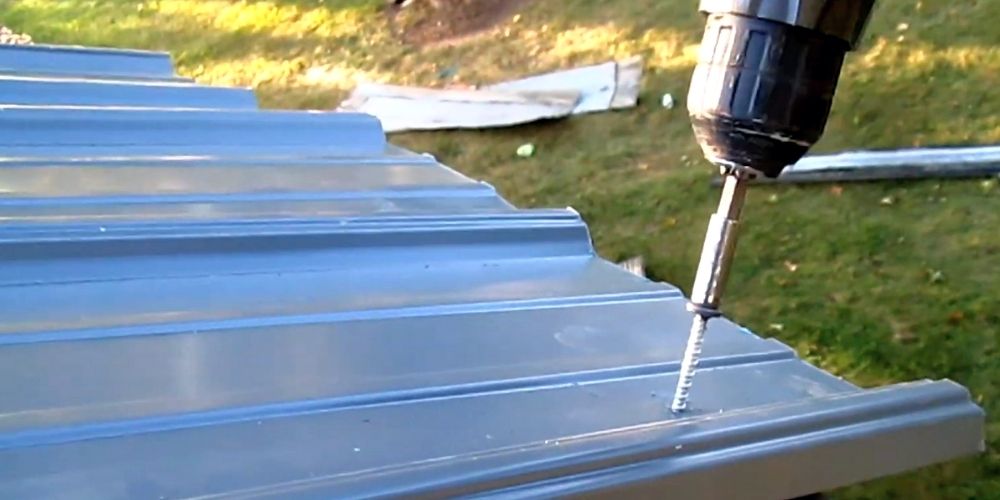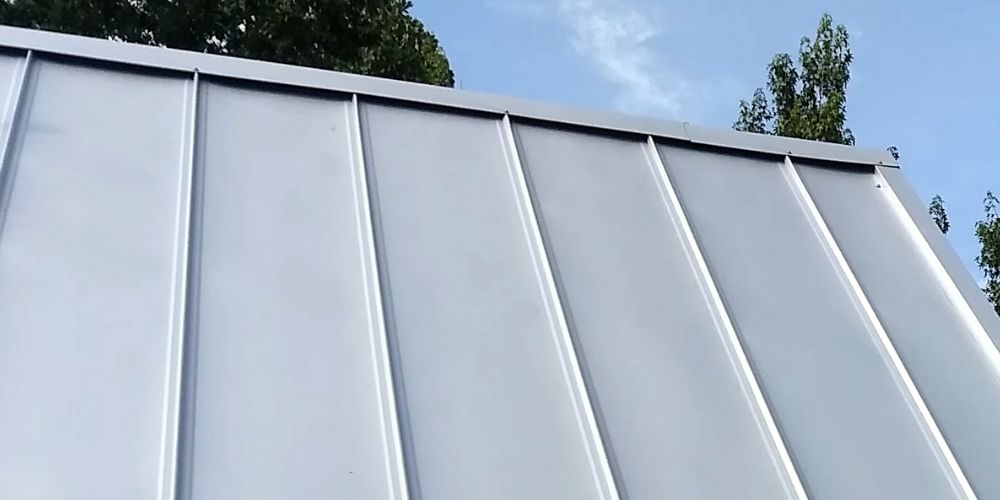The Pros and Cons of Metal Roofing
Here’s what you need to know if you’re considering buying a house with one or installing one.
It may be time to consider a metal roof if your present roof costs you a lot of money in maintenance. When it comes to roof replacement or new construction, many homeowners prefer metal roofing. Metal roofing materials are available in metals, including galvanised steel, copper, aluminum, and tin, and can be installed using methods. A metal roof has several benefits, but it also has a few drawbacks to consider. We’ll go through each in this post.
Pros
Metal roofing has rapidly grown in popularity with the numerous advantages it provides that roofing materials just cannot match. These are some.
Long-Lasting and Resilient
The extended lifespan of metal roofing is at the top of our list of advantages. It usually lasts the same amount of time as the house. It can keep water out, withstand strong winds, is non-corrosive (perfect for those houses by Melbourne beaches) and rapidly shed snow. Metal roofs are also fire, rot, insect, and mildew resistant. It’s an investment that, with proper maintenance, can keep your roof looking fantastic and safeguard your belongings for up to 70 years. A metal roof also comes with a 50-year warranty, whereas traditional roofing materials only have a 20-year warranty.
In This Article
For comparison, according to the National Association of Home Builders (NAHB), asphalt shingles for 20 years, modified bitumen roofing for 20 years, fiber cement shingles for 25 years, tar and gravel (flat roof) for 20–25 years, and wood shingles for 30 years are projected to survive.

Lifespan of a metal roof
Depending on the environment, craftsmanship, metal roofs can last up to 50 years, approximately the same as the clay/concrete tile roofing with 50 years, simulated slate with 50 years, and real slate with 50 years or more.
Metal roofs can endure the weather in your location since the material is quite sturdy. You might be worried about rust, but modern metal roofing has a protective coating that prevents oxidation, which causes rust.
Metal roofing, installed by Total Roofing and Cladding specialists, can help you stay in the same spot for a long time or pass down your home to the next generation.
Lightweight
It puts less strain on building structures than other materials like tiles. It’s also tough, capable of supporting the weight of solar panels and thermosiphon hot water systems without breaking.
Metal roofing can weigh anything from 1 to 3 pounds per square foot, depending on thickness and profile. It is one of the lightest roofing materials available. Because it is lightweight, you may save money on the supporting structure’s construction. Because of the low weight of metal roofing, you may frequently reduce the number of roof support components when building a new house or an extension.
Safe
During a wildfire or a lightning strike, metal roofs will not spark and flare into flames.They will not catch fire if they come into contact with flying sparks due to the noncombustibility of metal roofing materials.
Energy-efficient
Metal roofs reflect UV and infrared radiation from the sun which contribute to radiant heat on the roof surface, reducing heating and cooling costs by 10 to 25%. Due to the reflecting features of this type of roof, the cost of installing a metal roof can be recovered through monthly savings and reduced cooling costs. The Metal Roofing Alliance states that these reflect solar radiation heat, which may save up to 25% on cooling expenditures year-round, but notably during the long summer days. Furthermore, other metal roofing is treated with heat-reflective pigments to reduce heat input and keep people cool without turning on the air conditioner.
Environmentally friendly
Metal roofs are not only made up of 25-95 percent recycled material, depending on the type, but they are also 100 percent recyclable at the end of their useful life as a roof. The majority of shingle tear-off debris, on the other hand, winds up in the building-related waste stream, amounting to up to 20 billion pounds each year.
When compared to concrete tiles, this is a significant difference. Concrete is one of the most significant sources of CO2 emissions, accounting for 4–8% of global emissions. When a metal roof reaches the end of its useful life, the components may be recycled.
Low-cost maintenance
You’ll never have to spend a dollar on maintenance with metal roof sheets. Even if small repairs are required, they usually consist of simply brushing off the leaves or repainting after an initial coat of paint was done when your new roofing material was installed.

Easy installation
Metal roofs are quick and simple to install when panels are used. Metal roof sheets are seven times lighter than traditional roof tiles! Considering a roof replacement from tile to tin is ideal for homes that appear to be at risk of being blown away in a storm. Metal roofing is an excellent choice for any home since it protects against all forms of weather while also boosting the value. Metal roofs range in width from 12 inches to 36 inches broad, depending on where you reside.
Customisable
Metal roofing may be customised in hues, making it a one-of-a-kind feature or enhancing the home’s appearance. There are almost unlimited alternatives that make metal roofing unique, including vivid color options, conventional copper, and tin aesthetics.
Cons
There aren’t many, but each roofing application and material choice has its own set of difficulties. Here are the top four disadvantages of metal roofing.
Prone to dents and leaky fasteners
Though they are designed to combat harsh weather that runs quickly down the metal slope rather than lingering and producing leaks, huge hail or falling branches can cause damage to certain metals. If these drawbacks appear to be deal-breakers, be assured that they may be completely avoided by choosing the right shingle. Some metals are just more corrosion resistant than others. Because aluminum and copper are softer than steel, they are more susceptible to damage.
Water may cause harm to a roof if it gathers anywhere on it as a result of faulty installation or repair. Low-grade metals are also likely to have a narrower gauge and be less durable. Some metals corrode more readily in specific regions or dent more easily during hail storms or installation than others, and the majority of exposed fastener systems do not meet the same engineering criteria as standing seam metal roofing. Rainwater can leak through the screw holes in a metal roof with exposed fasteners, which many expert roofers will not advise.
Expensive
Metal roofs can cost two to three times as much as other types of roofing. While a metal roof has a significantly longer lifespan, you should only invest in one if you intend to stay in your house long enough to reap the financial benefits.
A metal roof cost comes at a considerable price for the many years of service it offers. Based on Home Advisor’s Guide to Roofing Costs, the material may cost anywhere from $120 to $900 for 100 square feet. Then, not only are the materials expensive, but the labor to install them is also more expensive than other forms of roofing due to the training, skills, tools, and equipment required.
Noisy
During rainstorms or hailstorms, metal roofs may be rather noisy. It’s true that anything that falls on a metal roof makes a louder noise than something that falls on an asphalt shingle or wood shake roof. However, modern installation procedures can insulate against this noise to some extent, and metal roof owners seldom consider this to be a significant drawback over time.

Difficult to repair or modify
Metal roofing is more difficult to repair than single shingles since it is put in huge panels. It might also be hard to find matching patches to fix a colored metal roof.
Conclusion
When choosing a new roof for your existing or new house, it’s critical to take your time and research the roofing materials, contractor, and installation options. If you have the budget to pay for metal roofing upfront and expect to stay in your house, it might be a wise investment. This is especially true if you reside in a storm-prone or wildfire-prone location and your home’s layout allows for metal roofing. Remember, metal roofing is a long-lasting, lightweight, and professional-installed option.
